#Sumer civilization
Text
Sumer civilization

Some of the outstanding rulers of this era were: Etana of Kish, a figure of legendary fame Enmerkar, Lugalbanda, and Gilgamesh of Erech, three heroic figures celebrated in a cycle of epic tales and Mes-anne-padda of Ur, the first ruler from whom we have contemporary inscriptions. History of a legendary character begins in Sumer in the first half of the third millennium with the three partly contemporaneous dynasties of Kish, Erech (Uruk), and Ur. Sumerian civilization, therefore, is a product of the ethnic and cultural fusion of Ubaidians, Semites, and Sumerians it is designated as Sumerian because at the beginning of recorded history it was the Sumerian language and ethos that prevailed throughout the land. from their original home, which may have been in the region of the Caspian Sea. The Sumerians themselves did not arrive until about 3500 b.c.e. Following the settlement of the land by the Ubaidians, nomadic Semites from the north and west infiltrated the land as settlers and conquerors. Nothing is known about their language except for traces left in a number of geographical names and words, relating to agriculture and technology, borrowed by the Sumerians. by agriculturists from the hilly regions to the north and/or east, known as Ubaidians because their remains were first uncovered in al-Ubaid, a tell near Ur. Šumer ī Sumerian Kengir) is the earliest known name of the land corresponding roughly to the southern half of Iraq. We have Sumerians to thank for the 360° in a circle, for basic geometry and even the very first toys designed for children.Sumer (Akk. Alongside these major changes, the Sumerians also developed the first books, schools, historian, legal precedent, proverbs… the list is near endless. They are famed for the introduction of the wheel, and of both writing and the measurement of time – all things that today are a regular part of daily life. Some people argue that the Sumerians were the world’s greatest inventors. Sumerians believed that their Gods lived in the temples and descended to earth down their stairs. Sumerian ziggurats were enormous temple complexes which also contained offices, workshops and treasuries. This is an embedded Microsoft Office presentation, powered by Office Online. There were seven main gods and hundreds of minor ones. Each of the Sumerian city states had its own god. The Sumerians were the first people to develop writing and they used over 500 pictographs which over time evolved into cuneiform script. The Sumerians developed a calendar based on the moon and the sun (lunisolar). This is why we have 60 minutes in an hour and 360 degrees in a circle. The Sumerians were excellent mathematicians and used 60 as a base. These ancient city hills are called tells Continual rebuilding of the cities over the centuries had raised their level above the surrounding land so they looked like hills. The ancient cities of Sumer were rediscovered in the 1840s. Sumerian civilisation was very long lived, lasting from c 5300 BC to c1940 BC – from the late neolithic to early Bronze Age periods. Legal Information and GDPR for Trainee TeachersĪncient Sumer was made up of city states located in the southern part of Mesopotamia, in the region where the rivers Tigris and Euphratesmeet.King Edward VI Northfield School for Girls.King Edward VI Handsworth School for Girls.King Edward VI Handsworth Wood Girls’ Academy.King Edward VI Handsworth Grammar School for Boys.King Edward VI Camp Hill School for Girls.King Edward VI Camp Hill School for Boys.Admission for King Edward VI High School for Girls.Making Birmingham the best place to be educated in the UK

0 notes
Text
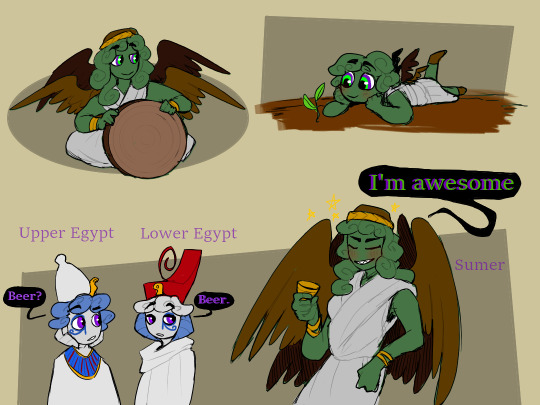
The first civilizations!
Sumer! with agricolture , wheels and beer !
"Beer is thought to have been invented by the Sumerians, who lived in what is now Iraq, around 8,000 BC and ancient tablets have been unearthed showing the original brewers were women. The Sumerians even had a goddess of beer, Ninkasi."
And Upper and Lower Egypt! (like twins that later fuse togheter to become one Ancient Egypt, I always liked how they had a fusion of crowns to symbolize the union )
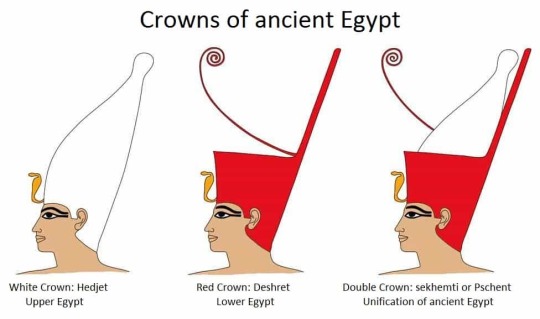
#countryhumans#countryhumans sumerian civilization#countryhumans upper egypt#countryhumans lower egypt#countryhumans sumer
121 notes
·
View notes
Text

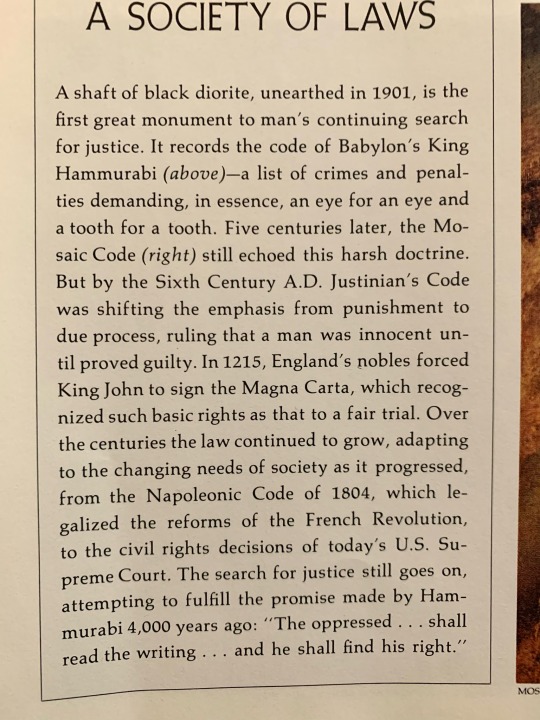
I was reading a book about Ancient Mesopotamia, and came across this mention of the Napoleonic Code:
Over the centuries the law continued to grow, adapting to the changing needs of society as it progressed, from the Napoleonic Code of 1804, which legalized the reforms of the French Revolution
Source: Samuel Noah Kramer, Cradle of Civilization
The book is about what is believed to be the first civilization, and how it’s own developments (writing, urbanization, law, trade, etc) have impacted and laid the foundation for societies to this day. Really amazing to see how history is all connected.
#interesting#napoleonic#Mesopotamia#napoleonic code#code of Hammurabi#cradle of civilization#Samuel Noah Kramer#Kramer#book pic#Sumer#Sumerian#frev#french revolution#napoleon#Napoleonic era#history#book pics#ref#first french empire#french empire
28 notes
·
View notes
Text
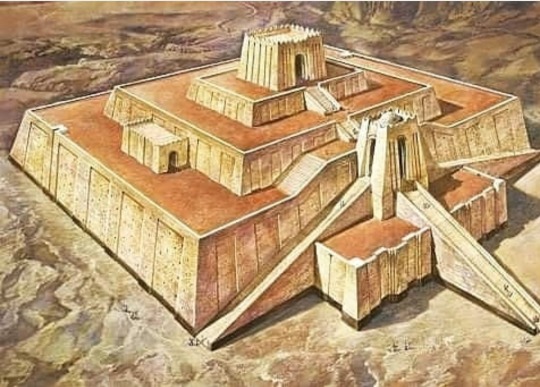
A Ziggurat at Eridu is a massive stone structure built in ancient Mesopotamia...but why and how was it built?
⛰⛰⛰🛸🛸🛸
#anime#ufos#aliens#scifi#extraterrestrials#animation#ancient aliens#comic books#fantasy#manga#eridu#mesopotamia#sumerian#sumer#ancient civilizations#ancient astronaut theory
3 notes
·
View notes
Text
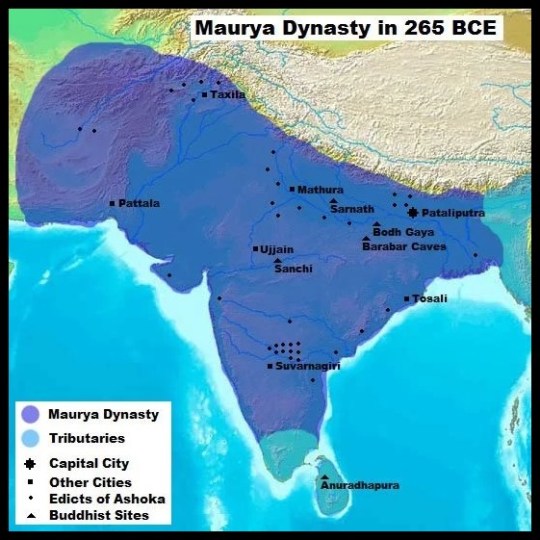
Why has the Indian Civilization got smaller?
We know that the cities of Indus valley were about 10 times larger than those of Sumer and Egypt; when they were only cities states in Greece, at that time the Mauryan Empire flourished in India. However, beginning 10th century CE though we can see a decline in of the Indian civilization.
Post- http://www.commonprophets.com/does-the-decline-of-india-in-the-last-1000-years-have-philosophical-roots/
Video- https://youtu.be/rdFHtcmJodM
Podcast - https://open.spotify.com/episode/2OC5ozZzx8w4MOVlo6aNuR?si=LqdDos1ER_6tB4XmPwgrew
3 notes
·
View notes
Text
youtube
History of the Sumerians
1 note
·
View note
Text
What We Got Wrong About Da Ancient Time
The study of ancient civilizations has long captivated the human imagination, but as our understanding evolves, it becomes evident that some of our assumptions about these ancient times have been flawed. In this blog, we will explore a few key misconceptions and shed light on what we've gotten wrong about the ancient world.
Misconception 1: Monolithic Cultures:
One prevalent misconception is that ancient civilizations were homogenous and uniform in their beliefs and practices. In reality, these societies were often diverse and dynamic, comprising various ethnic groups, languages, and cultural traditions. For example, ancient Egypt saw changes in religious practices and ruling dynasties over its long history, reflecting a complex and evolving society.

Misconception 2: Technological Inferiority:
Another common misconception is that ancient civilizations were technologically primitive compared to our modern era. While they lacked our advanced tools, ancient peoples displayed remarkable ingenuity. The ancient Greeks, for instance, developed sophisticated mathematical concepts and complex machinery, such as the Antikythera mechanism—an ancient analog computer.
Misconception 3: Lack of Intellectual Pursuits:
It is often assumed that ancient societies were solely focused on survival and lacked intellectual pursuits. However, this disregards the significant contributions made by ancient scholars, philosophers, and scientists. The Library of Alexandria in ancient Egypt, for instance, housed a vast collection of knowledge, while ancient India produced groundbreaking mathematical treatises like the concept of zero.
Misconception 4: Primitive Art and Architecture:
Ancient Civilizations produced stunning works of art and impressive architectural marvels, which challenge the notion of their supposed primitiveness. The intricate sculptures of ancient Greece, the grandeur of Roman architecture, and the awe-inspiring temples of Angkor Wat in the Khmer Empire all attest to the advanced artistic skills and architectural knowledge of these ancient peoples.
Misconception 5: Limited Gender Roles:
Ancient societies are often portrayed as strictly adhering to traditional gender roles, with women confined to domestic duties. However, evidence from various ancient civilizations suggests a more nuanced reality. Women in ancient Egypt enjoyed legal rights and could hold positions of power, while the Celtic societies of ancient Europe recognized women as warriors and leaders.
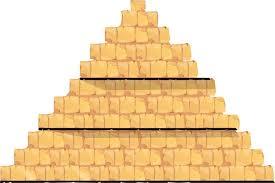
Conclusion:
Reassessing our preconceptions about Ancient times allows us to appreciate the complexity and diversity of these civilizations. Ancient societies were not monolithic or technologically inferior, and they fostered intellectual pursuits and artistic achievements. By reevaluating these misconceptions, we gain a deeper understanding of the ingenuity, resilience, and cultural richness that characterized the ancient world. It is a reminder that history is a tapestry woven with diverse threads, and our interpretations should continually evolve as new discoveries and insights come to light.
#ancient aliens#ancient#ancient aliens clips#ancient ufos#ancient history#ancient aliens full episodes#ancient ufo video#ancient apocalypse#ancient aliens season 13#ancient aliens s13#ancient aliens season 13 clips#ancient aliens se13#ancient aliens history channel#ancient aliens history#ancient astronaut theory#watch ancient aliens#ancient civilization#ancient sumer#ancient civilizations#ancient history animated#ancient punishing
1 note
·
View note
Text
REINCARNATION/REBIRTH = pre-vedic/indus
local practices of Indus parallel Egypt and Mesopotamia
- not paavam (sin) or punya, your life actions weren’t consequential
- life determined by fate, you pray/sing/perform ritual to appease deities out of fear and duty
---
brahmins coopted the role of priest, karma & reincarnation, and imposed the notion of paavam onto that, stating what you do now affects your next birth
- samana movement rejected foreign vedas, their authority, adherence to their rituals or superiority
- preferred ahimsa (non-violence), self-inquiry, etc. ie. philosophy & spirituality
#brahmin#aryan#aryan invasion#aryan imposition#aryan intrusion#dravidian#tamil#indus valley#meluhha#melakam#south asia#india#nepal#Sri lanka#pakistan#mesopotamia#sumer#ancient civilization#ancient civilizations#history#ancient history#religion#spiritual#yoga#spirituality#buddhism
0 notes
Photo
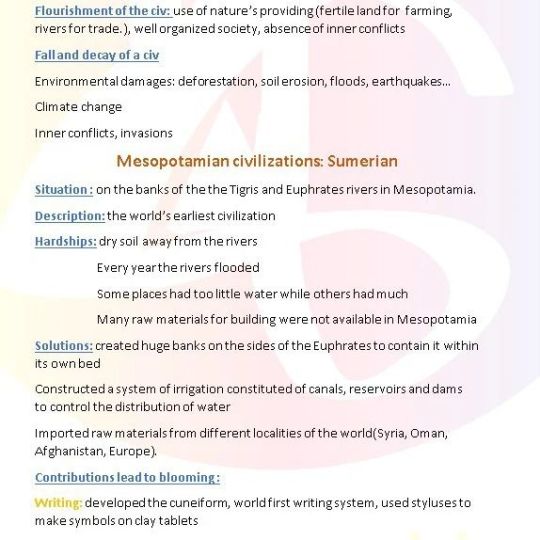
Sumerian civilization #civilization #mesopotamia #sumer #hammurabi #باك #لغات https://www.instagram.com/p/CgxeuQ3MVMF/?igshid=NGJjMDIxMWI=
0 notes
Photo
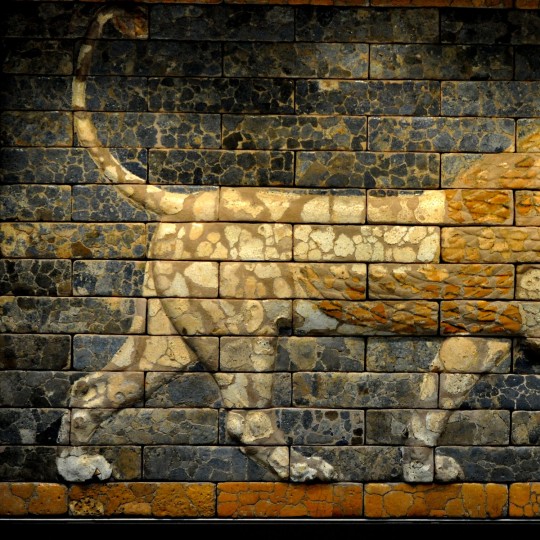
Mesopotamian Art and Architecture
Ancient Mesopotamian art and architectural works are among the oldest in the world, dating back over 7,000 years. The works first appear in northern Mesopotamia prior to the Ubaid Period (c. 5000-4100 BCE) and then developed in the south during the Uruk Period (4100-2900 BCE) in Sumer which established the first historical civilization.
Continue reading...
84 notes
·
View notes
Note
i just watched someone saying "christianity is and always will be the cultural appropriation of religions" and they mentioned the resurrection, which surprises me a little. do you know what they could be referring to? they also called it a very common trope and i'm no theologian, don't know that much about other religions or mythology, so maybe you could help?
resurrection narratives are absolutely not unique to christianity. there are resurrection narratives in the religion of ancient egypt (osiris), greece (adonis, zagreus, dionysus, and attus), and sumer (dumuzid and inanna). all of these predate christianity by centuries. to consider resurrection myths appropriation is, however, rather ignorant: the mythologies of the ancient near east are absolutely woven together, to the point where they are almost indistinguishable from each other, especially in the early history of the hebrews. the roman empire was heavily influenced by hellenic culture, religion, and philosophy. consider dionysus, the god of wine: plutarch stated that the stories of osiris and dionysus were identical and that the secret rituals asociated with them were obviously paralleled: the second century AD saw the emergence of greco-egyptian pantheons where the god serapis was synonymous with osiris, hades, and dionysus. this is also similar to the interrelationship between inanna, ishtar, asherah, astarte, and multiple other near eastern female deities (and she likely played an influence in the development of lilith as well). how much did the cult of dionysus influence later rites of the wine and the eucharist in early christianity, especially given that within fifty years of christ's death most christians were greeks? romulus and remus were said to have been born to a virgin, and so was the founder of zoroastrianism, zoroaster, a religion that influenced platonic philosophy and all abrahamic faiths.
christianity is more guilty of appropriation that most other faith practices of appropriation because of the crudeness and hatefulness with which it borrowed judaism and then turned on the jews. but attempting to divide western and near eastern religious traditions into pure (original) and impure (appropriated) is next to impossible. otherwise we can start trying to particularize everything as either pure or impure and discard what we deem as "impure" or unoriginal because we think it is valueless, hackneyed, or unethical. religion does not work like that. christianity does require critical consumption and practice because it has both appropriated judaism and because the way in which it exerted itself as a dominant religion over other faith practices. and the appropriation of judaism must be especially viewed as troubling, because judaism cannot be compared, historically, to religions like those of ancient egypt and greece because until the state of israel it was never a dominant or state religion, and the fact that it survived some odd thousand years without being recognized as a state religion is part of why it's particularly interesting. of course, that has changed now, but this ask isn't about israel/palestine and i won't dwell on it this issue much except to reaffirm that christianity appropriating an oppressed minority religion that emerged out of colonial contexts is very different than christianity utilizing aspects of ancient greek religion or zoroastrianism, and also different from jesus being included in islam, for instance.
interestingly, quetzalcoatl, from the ancient aztec religion, was the patron of priests and a symbol of resurrection. this gestures to the hidden sacred, eliade's hierophany: the hidden holiness, the sacrality and beingness of something beyond ourselves, that underlies all existence, with its own explicit truths that emerge consistently in faith practices that, unlike those of the near east, never interacted. maybe we all carried the same stories out of the cradle of civilization; maybe there is a perpetual and accessible truth that transcends boundaries. i don't know. but everything is borrowed. everything is copy. humanity is not capable of true originality: and isn't that beautiful? everything is taken in communion. everyone is interconnected. everyone wants to believe something, and we seem to be universally compelled by the same truths, motifs, meanings, and stories.
72 notes
·
View notes
Text
Lately, I've been reading about Sumer, Egypt, Assyria, Asia, Greece, and various early human civilizations. In the past, the general notion of 'religion' once entwined art, science, and ethics. That is to say that religion has, by and large, been a quasi-unifying way of viewing nature as one dynamic, connected thing.
Modernity seems to have abstractly tried to separate these ideas and isolate them into their own realms, as if they exist independently of one another.
This is kind of ironic. Because today we know from both physics and plain observation that ideas and things are interconnected. Denying this is absurd.
Knowledge itself, like great art and science, is often forged through great adversity. This is counter-intuitively good. One can get an understanding of a culture from how its inhabitants view both its ancestors and the hard-earned knowledge that's been passed down from generation to generation. Or, failing that, inquiring about where, exactly, it gets its knowledge from.
And physical and spiritual traits tend to be entwined, too (medical issues aside). One tends to accompany the other. For example, traits at a spiritual and metaphysical level get reflected at the object level. Thus, we can observe that the morals or values of a culture are sometimes reflected in the outward appearances, behaviors, and artistic creations of the people. Many of these principles are surprisingly generalizable.
A culture is the sum of this and more. Categories of things like these can reveal how a culture organizes itself. How it reproduces itself—not just sexually but memetically. It's customs and practices. How it records itself, thinks of itself, and artistically expresses itself. And what it permits and forbids.
Religion is like culture. And culture is almost indistinguishable from religion.
The main difference, I think, is that religion is encompassing in the sense that it has functionally served as a container for science, art, and itself for much of history.
In this way, religion is like an overarching organic structure that has served various functions in structuring ideas as well as social order.
Furthermore, every culture and subculture is a sort of quasi-religion, even if it doesn't explicitly identify as one.
Some claim that we have transcended religion, that we have eclipsed the past, and that we have left even our primitive shadows behind. But I don't think this is true at all.
It's religion all the way down. We still worship; we still play primal games; and we still play with fire and blood, albeit in different ways. It's just today that we're a primitive culture of Simians with computers. Some might say we are savage robots.
Others assert we are more highly evolved and know more today than ever before. And maybe, in some ways, we do know more. But in some other ways, it seems we have forgotten many of the obvious things that we once knew.
*This post is not a claim that religion is intrinsically good. It's an observation that religion is organic—and that in the spirit of functionalism, it served a purpose—that it was once (and still is, to some extent) a container for many things. But knowledge, science, ethics, and so on are collectively dynamic and evolving things. And we can all agree that nobody would want to live in a universe where people are put to death for wearing the wrong clothes or some other frivolous triviality. To say that humanity was completely better off at some point in the ancient past is blasphemy against human progress.
56 notes
·
View notes
Text
Ever wondered why we have 60 minutes in an hour? The origins of our time divisions date back to ancient Sumer, where astronomers’ brilliant sexagesimal number system shaped civilizations for over 5,000 years and impacted mathematics, astronomy, and navigation!
179 notes
·
View notes
Text

King Pakal As An Alien Ancient Astronaut
The enigmatic Tomb of Mayan King Pakal has attracted the interest of Ancient Astronaut Theorists like Zechariah and Erich von Daniken who suggest that the carved sarcophagus lid found in his tomb at Palenque depicts Pakal as an Anunnaki Ancient Astronaut.
King Pakal’s sarcophagus lid shows a man tilting backwards surrounded by glyphs and symbols that run along the edges of the lid representing important components of Mayan cosmology.
The mainstream consensus among Mayan experts is that the image on the Sarcophagus does not depict King Pakal as an Ancient Astronaut but instead, the image tells the story of King Pakal’s death and descent into the underworld.
However, an alternative explanation of the engraving of the lid of King Pakal’s sarcophagus was advanced by Ancient Astronaut Theorist Erich von Daniken in his book Chariots of the Gods where he claimed the lid depicted King Pakal riding on a rocketship.
On the basis of Erich von Daniken’s observations in Chariots Of The Gods, Ancient Astronaut Theorists state that King Pakal may have been part of the race of Alien Ancient Astonauts that built Civilization on Earth.
The leading criticism of Von Daniken’s explanation of King Pakal’s Sarcophagus as depicting an Ancient Astonaut criticises his suggestion that rocket power would be the method used by technologically superior Aliens to travel the Solar system.
The idea that Extraterrestrials would use rocket power to arrive on Earth seems anachronistic because this type of technology would be primitive to Aliens.
However, the use of rocket terminology does not in itself disprove Daniken’s argument that King Pakal was an Ancient Astronaut because the carvings on the lid could also be an advanced Reactor eg using antimatter or some other advanced form of Alien propulsion.
King Pakal: The Sumerian-Egyptian Connection
A deeper Ancient Astronaut Theory analysis of the lid of King Pakal’s Tomb based on the works of Zechariah Sitchin’s Earth Chronicles ultimately leads to the Anunnaki Gods of Ancient Egypt and Sumer who may have built an Alien Civilization on Earth.
Zecharia Sitchin’s Ancient Astronaut Theory analysis of King Pakal’s Tomb expanded beyond the self-contained mythology of one particular geographical area in determining the meaning of King Pakal’s sarcophagus lid.
63 notes
·
View notes
Note
Not a vocabulary ask 😅 but I was wondering if lapis lazuli had a special significance for the Sumerians? I remember reading a translation of the Epic of Gilgamesh and the stone pops up in relation to the divine a bit. Or is it simply that lapis lazuli was the gemstone they prized the most?
Hello! Lapis lazuli features frequently in Sumerian literature and appears in many Mesopotamian archaeological sites.
The lapis used in Mesopotamia is one of the clearest pieces of evidence for long-distance trade in that era, given that Mesopotamian lapis comes from mines in what is now northeastern Afghanistan; Afghan lapis has been found as far as Egypt and Mycenae(1,2) but by far the most has been excavated in Mesopotamia.(3) And the decline in frequency of lapis objects in Mesopotamian sites starting in the early second millennium BCE coincides with the breakdown of these networks,(1) contemporaneous with the decline of the Indus Valley civilization that was a major trading partner of Sumer and later Akkad.
In terms of associations, lapis lazuli's main connotation was wealth - possession of a lapis object was only available to the very wealthiest in Sumer, or for use in temples. Most objects from the Sumerian era made of lapis are small, like the eyes inlaid in larger sculptures, or small amulets or trinkets.(1) This is because "lapis lazuli was shipped from Iran to Mesopotamia in the form of small blocks or semi-processed masses."(2) So references to large lapis objects, like Inanna's lapis lazuli chariot that she offers to Gilgamesh in the Epic of Gilgamesh, show their fantastical nature, beyond the scope of what one could actually see in contemporaneous Mesopotamia. Who could be richer than a goddess?
The Bull of Heaven, also featured in Tablet VI, has horns "each [of which] was thirty pounds of pure lapis lazuli / and their cases were two fingers thick" (VI.161-62, Helle (2021) translation), an unimaginable bounty, while also showing the other major symbolism of lapis - the sky. Its blue was associated with the heavens, and the flecks of gold often referred to in literature as embedded in the lapis were the sunlight that shines through it.(1) So it's only appropriate for a heavenly bull to have humongous lapis horns.
For more on lapis in ancient Mesopotamia, see (1) Moorey 1994: 85-91; for how lapis was mined in ancient Afghanistan, including photos & maps, see (2) Tosi & Piperino 1973; and for more on the lapis trade, see (3) Hermann 1968.
64 notes
·
View notes